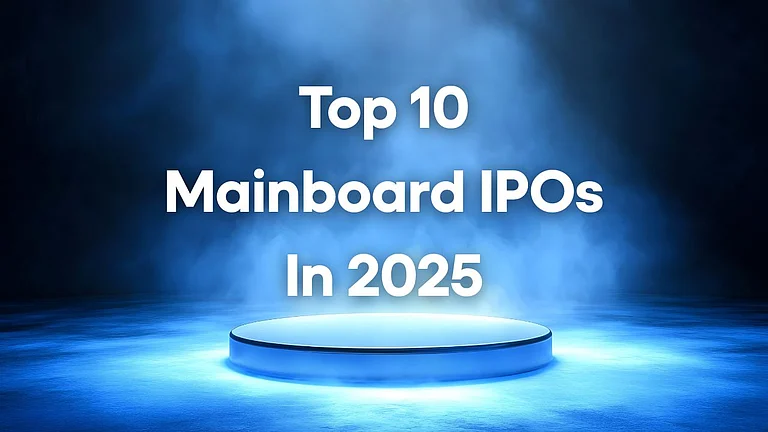In an interview, the CEO of PGIM India Mutual Fund listed certain dos and don’ts for mutual fund investors, and also threw light on the future journey of the global investment management business.
Q1. Market levels amidst the Covid situation are making seasoned investors nervous. How do you view the market?
The ongoing Covid situation, especially the impact of the second wave and the subsequent flattening of cases, will very likely lead to a bounce-back in economic activity. The attractiveness of Indian markets is highlighted by the overall growth rates across sectors. Although some pockets of the economy are under considerable stress, overall economy is definitely not fragile. Record forex reserves led by steady FDI in FII investments and a sharp increase in retail participation is aiding market buoyancy. However, inflation concerns are worrying seasoned investors over the world. We believe that there could be an impact on inflation due to the release of pent-up demand and related supply mismatches perhaps in certain areas – although these could be temporary in nature and increasingly will also be priced in. As we slowly return to normalcy, these negative effects will dissipate. It is important to keep a lookout at all times and adhere to your asset allocation plan.
Q2. Do you think investors should get in equity or increase allocation to debt?
This should depend on investors goals and the time frame of those goals. Every investor is likely to have a unique life situation and related needs. Equity has proven to be an inflation-beater in the long term and therefore cannot be ignored, especially for longer term goals. Good quality debt also can act as an anchor for the portfolio and protect against downside risks while providing fairly predictable outcomes. This therefore is better suited for shorter term goals; the proportion could vary depending on risk appetite. An investment advisor will be able to gauge what the ideal asset allocation should be for each investor after thoroughly discussing goals, time frames and risk appetite.
Personally, I have increased my allocation to equity to build towards my retirement goal and also invested in REITS and gold. Some portion of my equity investments also include international equities through our funds since this gives me exposure to sectors and stocks that are not represented in the Indian markets and definitely not at scale. If an investor has exposure predominantly to equity and debt, it would also therefore be worthwhile to consider taking exposure to other asset classes and gain from the diversification benefits.
Q3. Which are the best categories or sectors to ride such a challenging period?
It is important to define the challenge. A deep draw-down in equities for instance due to the pandemic would have disproportionately affected an investor with a high allocation to that asset class. That would be a challenge. The other challenge would be in trying to interpret and be tempted to act around the deluge of information from multiple sources and social media, on what is likely to happen. Apart from the virus induced-challenge, the next biggest is perhaps fake news, conspiracy theories and the like.
In such a scenario, it is best to stick to simple fundamentals. As Morgan Housel said, to create wealth, it is important to spend less than you earn, save the difference, invest in a diversified manner – and have patience. Taking the help of a qualified and trusted advisor is my addition to this, from the point of view of personal experience and investors who at the very least want a solid sounding board to their approach and decisions.
The best approach therefore in challenging times is to be well diversified and worry only about the proportions in your holdings. Within that, one can take advice on which categories to be overweight on. World over, old economy sectors are more sluggish compared to new age sectors and companies. Some of this can also be accessed, as mentioned earlier, through international funds.
Q4. What would be your advice to investors who look at gold and international funds as new opportunities to make money during troubled times?
Reiterating my point of being diversified. However, making money is also dependent on the time frame of investment in a particular asset class. Secondly, one must differentiate between saving, speculating and investing. While saving and investing is important for everybody, speculation is not. If we take a common-sense approach and agree that the times ahead are likely to be more volatile and characterised by relatively higher risk, then let us know that gold has worked well for such a scenario.
International funds do come with the exposure to currency and its impact. So far, a depreciating rupee has added to returns in such funds; but the more fundamental reason to participate in international equities is to gain exposure to companies that profit from the themes of an on-demand economy, digital payments, enterprise technology, automation and robotics and health. Focus on sectors and stocks that have scale and are not represented in the domestic markets.
Troubled times have brought to the forefront other important aspects of managing your money: namely, having an emergency fund, making a will and making sure that you have done your financial housekeeping well, including record keeping, nominations and the like.
Q5. What do you think should be the dos and don’ts for mutual fund investors at this point?
For anybody thinking about their money and wealth, the first step would be to take care of their health. Because health is true wealth. If you fall sick or are incapacitated in some way, all the wealth will amount to nothing. For investors in general, the dos are to make sure that you have your sequence right in terms of having enough insurance on life and health, having an emergency fund and then thinking about your investments. As mentioned earlier, investments should be aligned to goals, their time frame and risk appetite. The don’ts would be to guard against speculating and to not react to the deluge of information that comes around. Make sure that you separate the facts from opinions.
For mutual fund investors, the dos are to make sure that you are taking advantage of the diversification benefits that the category provides across equity market capitalisations, asset classes including debt, gold and also international. Include fixed income products for your saving needs and make sure that you have a conversation with a good advisor who understands your needs and can help you. The don’ts would be to guard against buying into funds only based on performance and buying more products that don’t give you genuine diversification benefits if portfolios have a high overlap with each other. Participate in mutual funds after you have completed your insurance requirements.
Finally, I would say that adequate insurance, emergency funds and then investment solutions is the sequence. Your financial goals too should have a sequence with retirement being the first. Call it retirement or call it financial freedom but that must be your first goal. This is because retirement is the only financial goal for which you won’t get a loan.
Q6. What are your plans for PGIM India Mutual Fund? Can you elaborate on the strategy that you intend to follow?
In my experience this is a people’s business first and then one of being relevant to our customers and partners. As Peter Drucker said - culture eats strategy for breakfast. We have therefore focussed on hiring and nurturing good talent that fits into the culture of the firm driven by the strong values of our parent company, PGIM. Being relevant means that we focus on having a good and consistently performing investment platform with the right solutions for our clients. For example, we launched the PGIM India Small Cap Fund on the 9th of July. At this point we are just taking market share in certain relevant categories. Eventually in the months and years ahead, we would like to further enhance our efforts by leveraging PGIMs global expertise in expanding the breadth of solutions and helping grow the size of the pie.
Q7. What is your outlook for the markets for the second half of 2021?
It is difficult to make short-term predictions in the current uncertain environment. After a strong rally, markets can see a correction coupled with a frenzy in the IPO market, which may not be a good sign. Yet, the medium-term outlook looks fairly positive on the back of slow but steady improvement in the Indian economy, which should be reflected in the stock markets as well. Economic activity has shown remarkable resilience in past few months, as and when the lockdowns have been lifted. I would say, corporate India has adapted well and showing signs of good growth.
Q8. How crucial is it to manage investor behaviour in the asset management business?
It is extremely crucial though as a manufacturer of investment solutions, it is our job to focus on the design of the product and solution and then manage them as per their mandate.
We work with our partners to bring to them behavioural insights that we have from our experience and present relevant conversation starters that help set expectations in the best possible way. The landscape is definitely changing given that awareness has increased, and our investors are maturing. A new set of younger investors are being on-boarded, technology is providing for convenience and also bringing a different set of challenges. The information and communication overload has its own effects too.
Surveys post the global financial crisis of 2008 suggest that trust in financial service products and people have reduced considerably and building trust is the first ask. We believe that more transparency can lead to building back trust. Sebi has rightly tightened norms around various aspects of fund management with a view to increasing that very aspect for investors. We at PGIM India MF have also adopted additional steps like declaring the portfolios of our savings oriented fixed income products on a daily basis on our website.
Our approach is to build on awareness but to not treat that as the end. It is a necessary but not sufficient condition to help investors achieve their outcomes. The answer probably lies in appropriate product and solution design.













